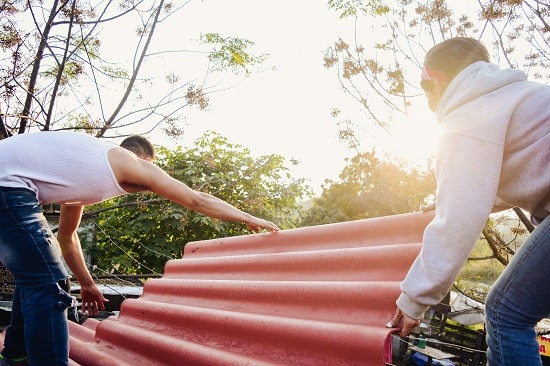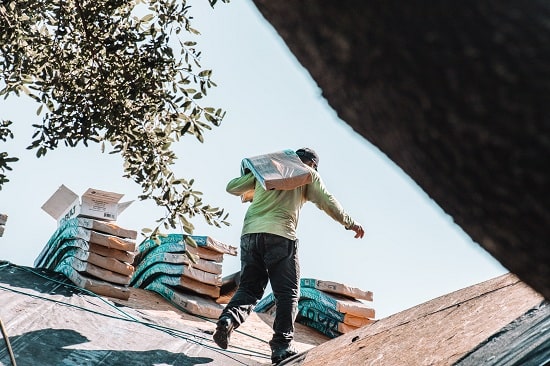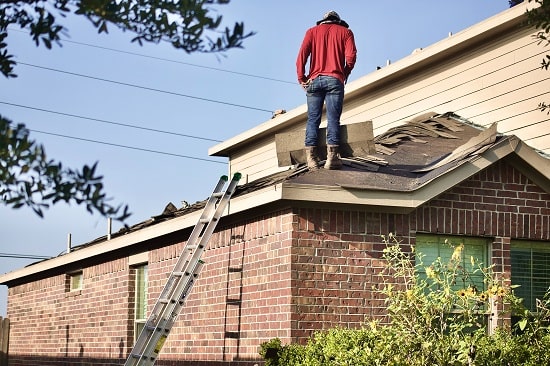Few things can ruin your home budget as fast as a bad case of extreme weather inflicting severe damage on your house. While in most cases the structural integrity of your home won’t be at risk, the same can’t be sadly said about the state of your roof afterward. Sites like YouTube or Facebook are full of videos showcasing roofs getting torn apart by the raging elements.
But does it mean you have to accept such bad luck and get ready for inevitable and costly repairs? Not necessarily. There are some tips and tricks you can use to protect your roof, no matter whether you live in Chicago, Los Angeles, or are looking for Fazio Villas for sale and want to minimize the damaging effects of extreme conditions.
Your first course of action should be a full inspection of the roof. Next, you might want to trim all of the nearby trees, get a proper insurance policy, and secure anything in the vicinity that might hit the roof when the winds come. Furthermore, it’s never too late to clean any gutters you have and remove the loose debris from the rooftop. Don’t forget about properly ventilating the attic and repairing any damage that might have formed there. Finally, consider replacing the roof with a metal one and keep it free of any moss growth. Follow these tips and make your roof sturdier than ever before!
Always Start With a Full Roof Inspection
This one is extremely important, yet many fail to do it at all. To properly assess the state of your rooftop, you’ll need to see every aspect of it and make notes on what needs to be done. For example, you can start with the shingles. If they are worked loose or missing entirely, you’ll have to replace them. Also, take a good look at the roof edge and ensure it’s not torn or damaged in any way. The same goes for the gutters. If they are loose or broken, you should fix them as soon as possible to avoid water damage on the inside of your home.

Trim or Remove the Trees Near the Roof
Trimming or removing trees surrounding your house is a must, especially given how severe the damage they can incur in some cases. To get rid of them, you might need to contact a professional arborist who will guide you through the procedure. Make sure to fully focus on cutting them down to avoid any needless damage from the falling trunks. Moreover, don’t attempt it when strong winds are blowing, as even a moderate gust can tip it in the wrong direction. If the trees located further away, there’s no need to remove them, you could even use them as a source of entertainment (here you can check the best tree swing).
Get a Proper Insurance Policy
The best way to protect yourself against extreme weather is to obtain a proper insurance policy. Your current insurance policy might not cover damage caused by intense weather conditions. That’s why you should consider purchasing an extra insurance policy that will cover any costs of potential repairs. If you’re unsure where to start, consider contacting your insurance agent and ask for advice on what you should do next. The best thing about such policies is that they are mostly budget-friendly, so you can feel safe with next to no impact on your finances!
Secure Everything in the Vicinity
Extreme weather can cause anything to fly and hit the roof with a great force. Most people don’t realize how dangerous it can be, but think about it – if a loose object hits the top of your house, the repair costs could quickly skyrocket. To minimize the risks, you should secure everything in the vicinity of the house, especially things that are large, yet not especially well-grounded. For example, if you have an empty barrel next to your home, make sure to either put it inside or weigh it down. You might think that a barrel is heavy enough, but a wind capable of breaking trees is more than capable of flinging it at your home.
Remove Any Debris From Your Rooftop
The rooftop is most likely the area that will be hit first during extreme weather conditions. That’s why you should remove any loose debris from it and make sure there are no objects near the edge that might fall and injure someone. Even a seemingly unimportant piece of concrete lying on your roof can be turned into a deadly projectile when strong winds start to blow. You should either use a ladder to get to the top of the roof and remove anything that shouldn’t be there or hire a professional if you don’t feel up to the task.

Clean Your Gutters Regularly
It might seem like a small task, but cleaning your gutters regularly can reduce the risk of clogging and even roof damage. Make sure you clean them at least once per year. Also, make sure you are using the right tools for this job. You can make the job easier by placing a gutter guard over your gutters to avoid clogging by things like leaves, pinecones, or small branches.
Ventilate Your Attic Properly
If you’re not ventilating your attic properly, it might get too damp there, resulting in potential fungal growths appearing. To prevent that, make sure you install venting so your attic will always have proper airflow during summer and also winter. While some people opt to use a passive venting system, others prefer to get a fan installed on their roof or inside the ducts. It all boils down to personal preference and the size of your attic, so make sure you do your homework and find the best option for you.

Fix Any Damage on Your Roof Before Any Storm
If you notice any additional damage to your roof, you should fix it before any storm hits. By repairing the damage, you prevent water from flowing into what’s broken and causing even more issues. If not everything can be repaired in time, try to prioritize elements that have the highest risk of being critically harmed. For example, you can repair small leaks in piping with special duct tape and also fill any cracks in support beams with a good quality sealant to reinforce the structure for the incoming extreme weather.
Replace Your Roof With a Metal One
Another way to protect your roof is to replace it with a metal one. Metal roofs are extremely durable and often last for many years without any repairs. They are also far less susceptible to wind damage, so they will protect your home as well as they protect themselves. If you decide to go with a metal roof, make sure you choose a quality brand and install it professionally to ensure its durability and efficiency later on.
Don’t Let Moss Grow on Your Roof
Moss growths on roofs are very dangerous because they can lead to a decrease in both tensile strength of the materials as well as how tight they fit with each other. After all, moss retains both water and moisture very well, meaning that the weight of your roof increases significantly. Moreover, the everpresent moisture is a breeding ground for any sort of bacteria and fungi. Combine these two effects, and the lifespan of your roof will be severely reduced, meaning that elements could now be able to damage it much easier.
Conclusion
As you can see, prevention can be a powerful tool when it comes to protecting your home from the elements. If you take the necessary precautions, you can protect your roof and reduce the risks of any major damage. Follow these tips for the best effect, but remember – make sure you know what you’re doing, and if you don’t, use the services of a professional. After all, your life and health are more important than the damage done to the rooftop. Ultimately, these can be repaired no matter the severity, unlike your body. Good luck!





























